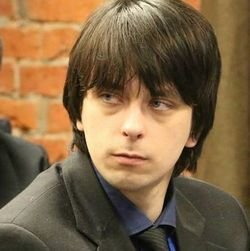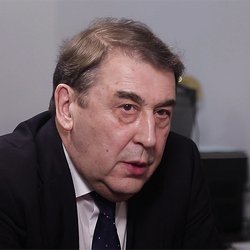Lessons of Russia’s Black Tuesday: ruble's sharp plunge to repeat in Russia?
The ruble fell by 40% in one day a quarter of a century ago. How did this happen and can the crisis happen again?
25 years ago, on 11 October 1994, the ruble fell sharply. In a matter of hours, the dollar rose from 2,833 rubles to 3,926 rubles. This day has gone down in history as the date of the largest fall of Russian currency — it has been dubbed ‘Black Tuesday’. Experts interviewed by Realnoe Vremya believe that the economic crisis occurred due to inept actions of the Russian leadership and do not exclude that such phenomena may occur in the future.
“The blame for this crisis lies with the Central Bank of Russia”
The dollar rose by almost 40% (from 2,833 rubles to 3,926 rubles) on 11 October 1994 on the MICEX. However, two days later, the ruble almost returned to its previous value. On 14 October, the US dollar cost 2,994 rubles.
That year, Russia's economic downturn continued, GDP volumes were declining, and inflation was increasing. Taxes were collected poorly, money was draining abroad, and revenues from exports were low — all this did not cause investor confidence in the country and especially did not inspire optimism in the population. People trusted not the Russian currency, but the more stable American dollar.
The members of the commission, investigating the circumstances of Black Tuesday, pointed to the “uncoordinated, untimely and incompetent decisions” of the federal government as the cause of the collapse of the Russian currency.

According to the expert, civil society had not been fully formed yet. The actions of the authorities were practically not controlled by society.
In turn, the economist, Andrey Nechaev, the former minister of economy of Russia, who had resigned one and a half years before the described events, sees the reason of the incident in the macroeconomic plane. Besides, he called specific culprits of the collapse of the ruble to Realnoe Vremya.
“The main blame for this crisis lies with the Central Bank of Russia and its then head Viktor Gerashchenko,” the ex-minister believes. “He professed the following idea: it is necessary to support with money the enterprises, including unprofitable ones. There was an intermittent growth of the money supply. Of course, there were different rumours. They say that the person who was engaged in currency trading did not find Gerashchenko, and Gerashchenko did not find him. As a result, interventions were not carried out in sufficient volume.”
After the relevant orders of President Boris Yeltsin, Head of the Central Bank Viktor Gerashchenko and Acting Finance Minister Sergey Dubinin lost their posts. Deputy Prime Minister Alexander Shokhin resigned.
The Security Council of the Russian Federation in its report blamed for the crisis not only officials who made decisions, but also bankers involved in speculative games. Both the banks that sold the currency (contributed to the fall of the exchange rate) and the banks that bought it (earned on the collapse of the exchange rate) were criticized.
“These reproaches looked strange,” notes Nechaev. “Banks were supposed to speculate in such circumstances. Each bank in its charter states that the purpose of its activities — profit for shareholders. If the state gives them such opportunity, why not take advantage of it?
The Association of Russian banks in those days stated that a discrediting campaign had been launched against them.”
The unlearned lessons of Black Tuesdays
It should be noted that two years before this crisis, on 22 September 1992, there was a similar Black Tuesday. The dollar rose by 14,73% — from 205,5 to 241 rubles. The ruble continued to fall against the background of world currencies in 1993 and 1994. However, in 1994, the authorities did not seem to have learned the lessons of the first blow.
“There was overconfidence, self-confidence of people in the government,” says Kutyrev. “Many reformers, including Yegor Gaidar, probably were guided by good ideas. Yegor Timurovich was more a scientist, but not a practitioner. However, the processes got out of his control. The people in power did not have enough competence to fully understand the situation and make the right decisions in a timely manner.”
The interlocutor of Realnoe Vremya added that the actions of those Russian young reformers of the beginning of the 1990s were reflected in the perception of liberalism by the population of the country as a negative phenomenon.
Moreover, Black Tuesdays happened not only in 1992 and 1994 but also in 2014.

“We can get a similar situation again”
Experts do not rule out that such a crisis may happen again.
“If we conduct irresponsible fiscal policy, then, of course, we can again get a similar situation, which we last observed in 2014, by the way, also on Tuesday,” emphasizes Nechaev.
Kutyrev even finds similarities between modern Russia and the Soviet Union.
“First, when we conduct mega construction projects of the century (for example, the Kerch Bridge), GDP begins to grow. When we stop building — GDP growth stops. Second, small and medium-sized businesses are not allowed to breathe, the whole economy is state-run, so it stagnates. Third, now we are being in the state of Cold War 2.0 (“light” version), and in this isolation, we are trying to draw out focus towards the East, so we want to be friends with China. Fourth, we “sell threats”: we say that we are surrounded by enemies, strengthen investments in the military-industrial complex, but completely forget about the science and technology industries, medicine, which greatly affects labour productivity and GDP growth. We see creeping inflation, rising consumer prices, falling wages, millions of people below the poverty line. The structure, built with the centre in Moscow, where the main resources, which are sometimes inexpediently used (tile shifting, renovation, the construction of the Big Ring), end up,” the scientist of the Higher School of Economics concluded.